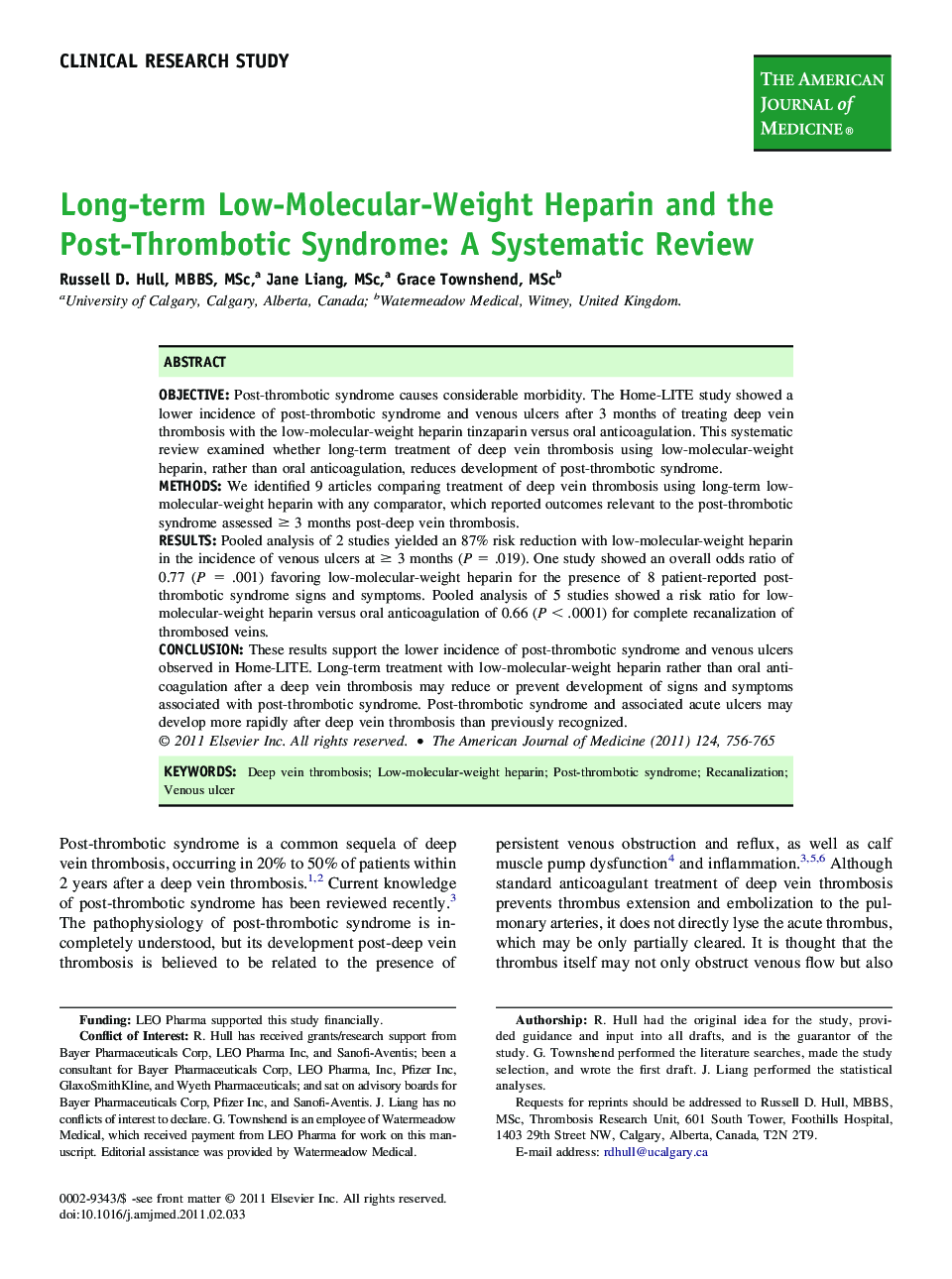| Article ID | Journal | Published Year | Pages | File Type |
|---|---|---|---|---|
| 2725488 | The American Journal of Medicine | 2011 | 10 Pages |
ObjectivePost-thrombotic syndrome causes considerable morbidity. The Home-LITE study showed a lower incidence of post-thrombotic syndrome and venous ulcers after 3 months of treating deep vein thrombosis with the low-molecular-weight heparin tinzaparin versus oral anticoagulation. This systematic review examined whether long-term treatment of deep vein thrombosis using low-molecular-weight heparin, rather than oral anticoagulation, reduces development of post-thrombotic syndrome.MethodsWe identified 9 articles comparing treatment of deep vein thrombosis using long-term low-molecular-weight heparin with any comparator, which reported outcomes relevant to the post-thrombotic syndrome assessed ≥ 3 months post-deep vein thrombosis.ResultsPooled analysis of 2 studies yielded an 87% risk reduction with low-molecular-weight heparin in the incidence of venous ulcers at ≥ 3 months (P = .019). One study showed an overall odds ratio of 0.77 (P = .001) favoring low-molecular-weight heparin for the presence of 8 patient-reported post-thrombotic syndrome signs and symptoms. Pooled analysis of 5 studies showed a risk ratio for low-molecular-weight heparin versus oral anticoagulation of 0.66 (P < .0001) for complete recanalization of thrombosed veins.ConclusionThese results support the lower incidence of post-thrombotic syndrome and venous ulcers observed in Home-LITE. Long-term treatment with low-molecular-weight heparin rather than oral anticoagulation after a deep vein thrombosis may reduce or prevent development of signs and symptoms associated with post-thrombotic syndrome. Post-thrombotic syndrome and associated acute ulcers may develop more rapidly after deep vein thrombosis than previously recognized.
